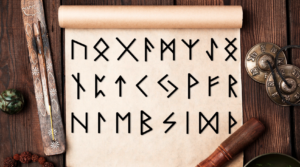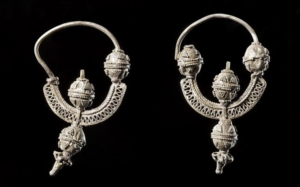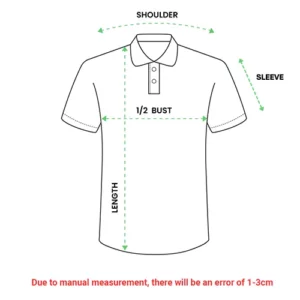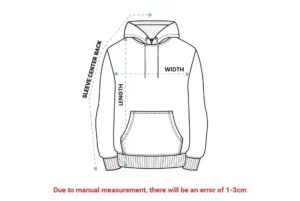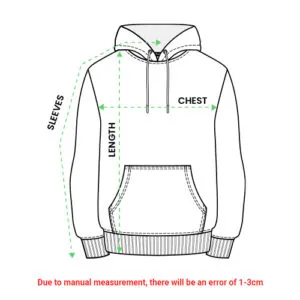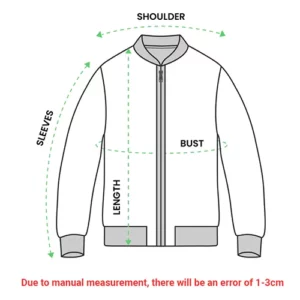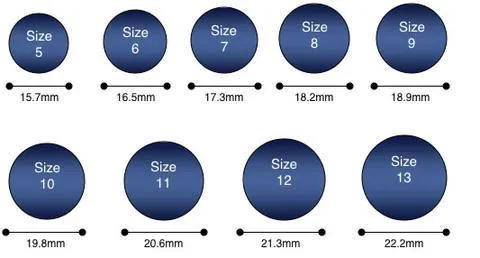Our knowledge of Viking Age clothing is fragmented, as the Vikings left behind few images and textual descriptions of their attire. Archaeological evidence is also limited and ambiguous. Consequently, scholars have interpreted the available evidence differently, leading to various plausible interpretations of Viking garments. This article presents a range of feasible explanations.
All Germanic peoples of Northern Europe wore similar clothing during the Viking Age. While variations existed, clothing styles were remarkably consistent throughout the Viking era and across the Viking lands. The image on the left depicts men’s attire similar to that worn across Northern Europe, while the image on the right shows a distinctly Eastern Norse style for men.
Men’s Clothing
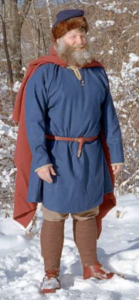
At the top, men wore a tight-fitting, long-sleeved tunic with a wide skirt. Underneath were potentially tight or loose trousers. The outer garment for the upper body was the kyrtill, an over-tunic made of wool. It was constructed using surprisingly complex patterns, with many fabric pieces cut and sewn together, yet minimizing waste.
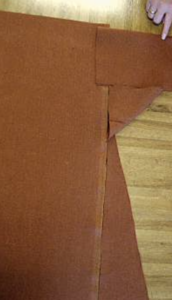
The left image shows individual fabric pieces assembled to create the tunic, while the right image displays a completed tunic. The intricate design resulted in an unrestricted garment that did not impede movement. The upper part was relatively tight-fitting, but the sleeves allowed freedom of movement. The skirt ranged from thigh to knee-length, with wealthier men using more fabric.

Sleeves were likely longer than typical modern attire, extending past the wrists. The tunic was pulled over the head, usually without fasteners, though some had a simple button and loop to secure the open neck. A keyhole neckline was most common, although other shapes were used for both men and women. Men’s necklines were high, as exposing the chest was considered immodest.

All but the poorest wore tunics decorated with tablet-woven braids, at least on the neckline and cuffs. Wealthier men’s tunics also had braided hems. These braids were woven from brightly colored wool using the tablet-weaving technique described later in the article.
Silk was also used for cutting tunics, although the cost of imported silk likely limited this decoration to the wealthiest. A 10th-century example shown on the right is a silk trim, embroidered with silver thread, likely a brilliant red color when new.
Beneath the over-tunic, most men likely wore an under-tunic, commonly made of linen, which was more expensive but more comfortable against the skin than wool. Its structure was similar to the over-tunic, except with longer sleeves and skirt. It is believed the under-tunic may have been visible, extending past the over-tunic, indicating the wearer’s wealth in affording an under-tunic.
One of the few intact linen under-tunics was found in Viborg. A modern replica is shown on the left and right. The front and back of the tunic body were made of two layers of linen, sewn together in a complex pattern with a central square and angled seams radiating outward, as shown on the left.
This replica (and the original) also has a square neckline with overlapping flaps in the front to block cold weather. The flaps were secured with a string and loop (right).
Men’s Trousers
A variety of trouser styles were worn in the Norse lands. Some were tight-fitting, while others were loose and baggy. Some trousers had simple constructions, while others were intricate, using complex patterns around the leg openings for ease of movement and incorporating foot-loops (like modern infant sleepers), with a waistband.
A sketch of a historical trouser with this patterning is shown on the left. In chapter 16 of the Fljótsdæla saga, Ketill Þriðrandason’s trousers are described as legless but with straps under the feet, like stirrups.
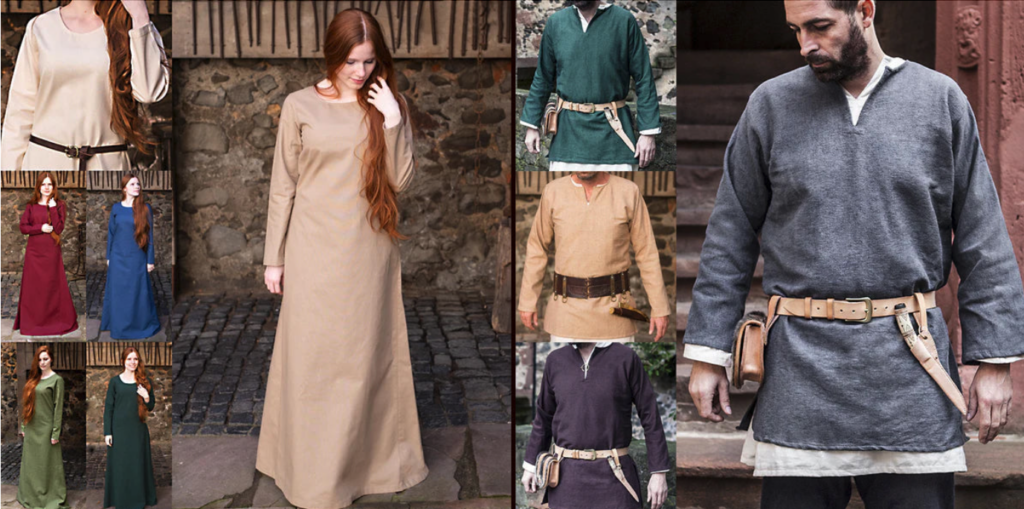
Trousers lacked pockets and flies. The absence of a fly meant men had to pull up their tunics and lower their trousers for relief. The lack of pockets in any Viking clothing meant men and women had to carry their daily items in other ways, described in more detail later: hanging from belts, carried in pouches, suspended from necklaces, or pinned to cloaks.
Some trousers may have been secured with a simple drawstring at the waistband, as seen in the reconstructed trousers shown on the left. However, many surviving examples feature waistbands, indicating trousers were held up by belts.
Some means of raising the trousers was necessary, as without a fly or waistline opening, the waistband had to be large enough to pass over the hips. Trousers with no way to secure them would simply fall to the ankles.
Fighting men took advantage of this. In chapter 6 of Bárðar saga Snæfellsáss, Lón-Einarr was fighting Einarr when Lón-Einarr’s trouser belt broke. As Lón-Einarr clutched his trousers, Einarr dealt him a fatal blow.
One saga passage suggests tight-fitting clothing was considered flashy or ostentatious. In chapter 45 of the Eyrbyggja saga, Þóroddur Þorbrandsson was wounded in battle, his trousers (with legs) soaked in blood. A servant tried to remove the trousers, pulling with all his might, but they would not come off. The servant remarked that the Þorbrandssons must be stylish dressers, as their clothes were too tight to remove. Snorri goði then looked closer and found the trousers were pinned in place by a spear through Þórodd’s leg.
One wonders if Þórodd’s trousers were like the tight-fitting Thorsbjerg trousers, an original well-preserved 4th-century German find, but with similar poorly preserved cut found at the Viking age Hedeby. A sketch of the pattern is shown on the right, and a linen replica on the left. The original had waistband loops on the ankles to secure it.
Women’s Clothing
Like men, women wore an under-tunic of linen, often dyed with plant-based colors like blue from woad or red from madder root. Over this, they wore a trailing gown or dress, and perhaps an outer wrap or cloak for warmth.
The Derest Dress is one of the best-preserved examples of a Viking Age gown. Illustrations show its remarkably complex construction, reminiscent of men’s tunics, requiring many fabric pieces stitched together.
As with men’s over-tunics, these gowns were elegant yet pragmatic garments that facilitated ease of movement. Wealthy women’s gowns were also decorated with tablet-woven braids and embroidery.

Accessories and Materials
Both men and women wore cloaks or long coats for warmth and protection from harsh weather. Daily items were carried by:
- Hanging from belts
- Carried in pouches suspended from shoulder straps or girdles
- Suspended from metal ring necklaces
- Pinned to cloaks with ornate clasps or tortoise brooches
Clothing was made primarily from wool and linen, with silk reserved for the wealthy due to import costs. Colors included the natural tones of wool and linen, enhanced by plant-based dyes like woad (blue), madder root (red), weld (yellow), and lichen (purple).
Tablet-weaving created the decorative braids adorning many garments. This technique used cards or tablets threaded with the colored wool that created complex patterns as the weaver turned the tablets in a specific sequence while weaving.
Conclusion
While limited evidence survives, the sophisticated construction, materials, and decorations of Viking clothing reveal a society with developed textile skills and a celebration of personal adornment within pragmatic constraints. Clothing reflected one’s wealth and status but prioritized freedom of movement essential for an active lifestyle. Through archeological finds and sagas, we gain glimpses into the ingenuity and aesthetics of Viking fashion.

















